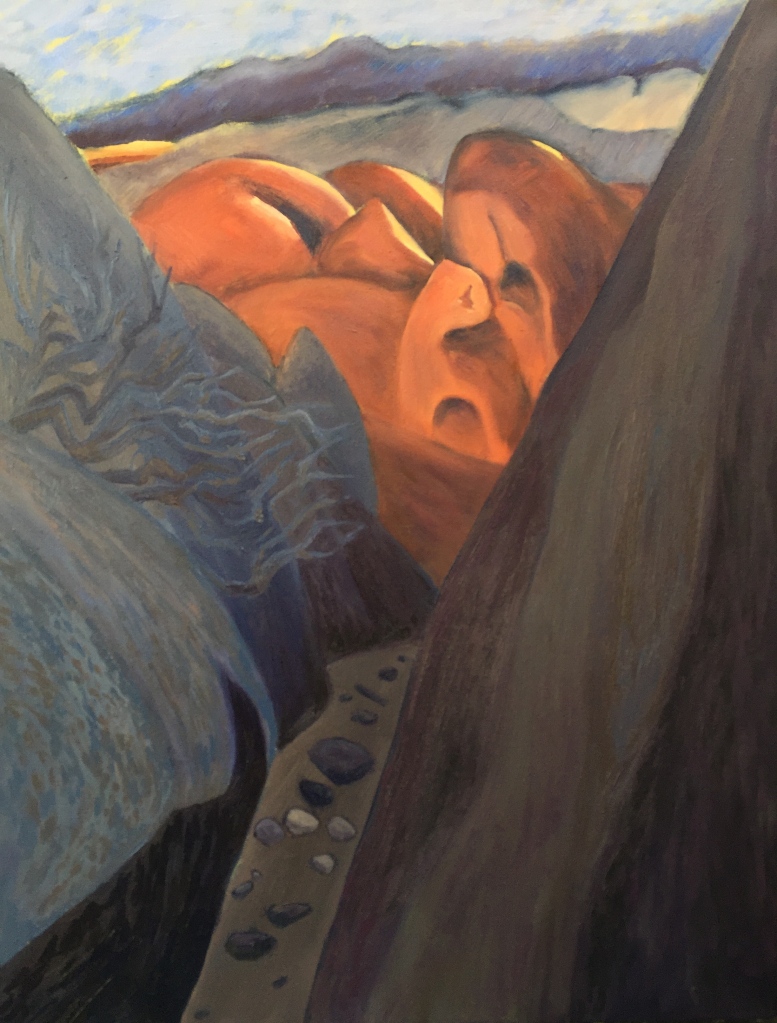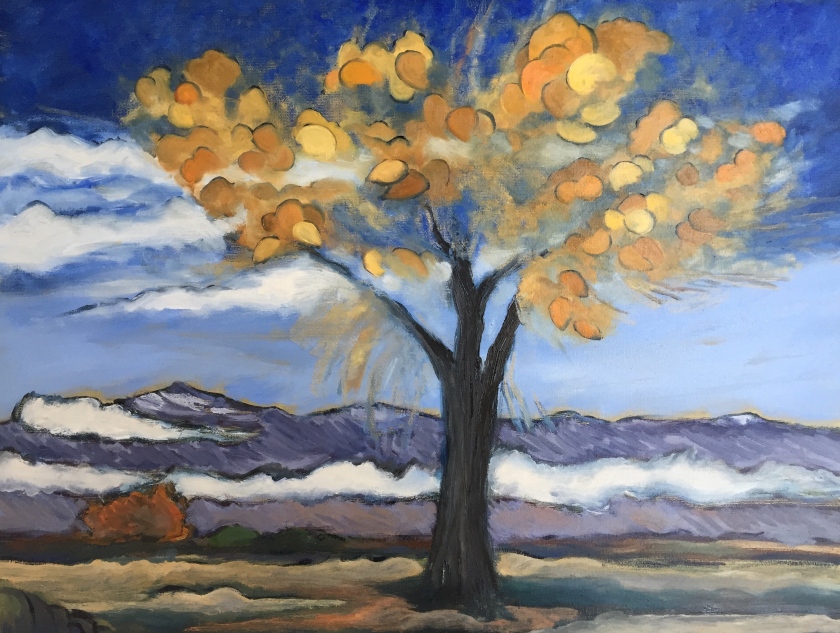
The snow, fondant-like, blanketed the mountains. Rushing down the canyons, the rain wrote creeks on the landscape, like icing, on a cake. October brought me to the big empty, the Owens Valley, the tectonic, volcanic landscape, now a desert, once a vast ocean. The thirsty cottonwoods grow alongside the Zen-like creek, waiting months, sometimes years, for the river they know will come. In the big empty, I sang a prayer for this land. Staring deeply, intently at the mountains and the rivers, imagining the ocean that once was, I sang this blessing by Nanno Sakaki[1] for what was and what can be:
“One day from the ocean, from yesterday, I’m sure
A lost hump-back whale will swim up this river.
And someday, from the ocean, from tomorrow,
Countless whales will swim up the river
To revisit the ancient beech forest,
Whales swimming up the river, up the river.”
A few weeks later, I stand before a Marsden Hartley work, painted in 1918, entitled The Last of New England – the Beginning of New Mexico hanging in the Chicago Art Institute. Writing to his friend, Alfred Stieglitz, Hartley described the Southwest: “I like the country very well for it is big and clean and true, and there is nothing dirty standing between one and the sunlight.” Standing before this work, I absorbed the intensity of the landscape realized in the painter’s forms and colors. Like Proust and his tea and madeleines, the painting roused my memory of the Eastern Sierra desert, big and clean and true. Now more than ever, we need people to stand up and speak out like the Sioux tribal leaders now singing their prayers in protest of the pipeline at Standing Rock. We do not need anything dirty, like an unnecessary pipeline, standing between us and the sunlight on the land.
A great shadow threatens the land. Lies and abuse, dressed as truth and normalcy, threaten our democracy, so tenuous, so often taken for granted. To heal our selves, we must take our song to the streets and valleys and together loudly sing our prayers for our land, our peoples, and our democracy. It will be a tough fight, but we must continue to urge national investment in clean and renewable energies and demand the cessation of investments in projects like the pipeline perpetuating fossil fuel dependence. Here at home, the LA Times reports that California leads the nation in energy productivity, electricity from renewable resources, and reductions in carbon intensity. Like the Shaman, we will raise our voice in song to heal ourselves, each other, and our community. Together, open, guiding, we will sing our love of the land we hold so dear.
Because the whales will swim up river, only when they hear our song.
[1] Sakaki, Nanno. “Mountains and Rivers and Japan.” A Sense of the Whole: Reading Gary Snyder’s Mountains and Rivers Without End. Counterpoint. Berkeley, 2015. p.128.


